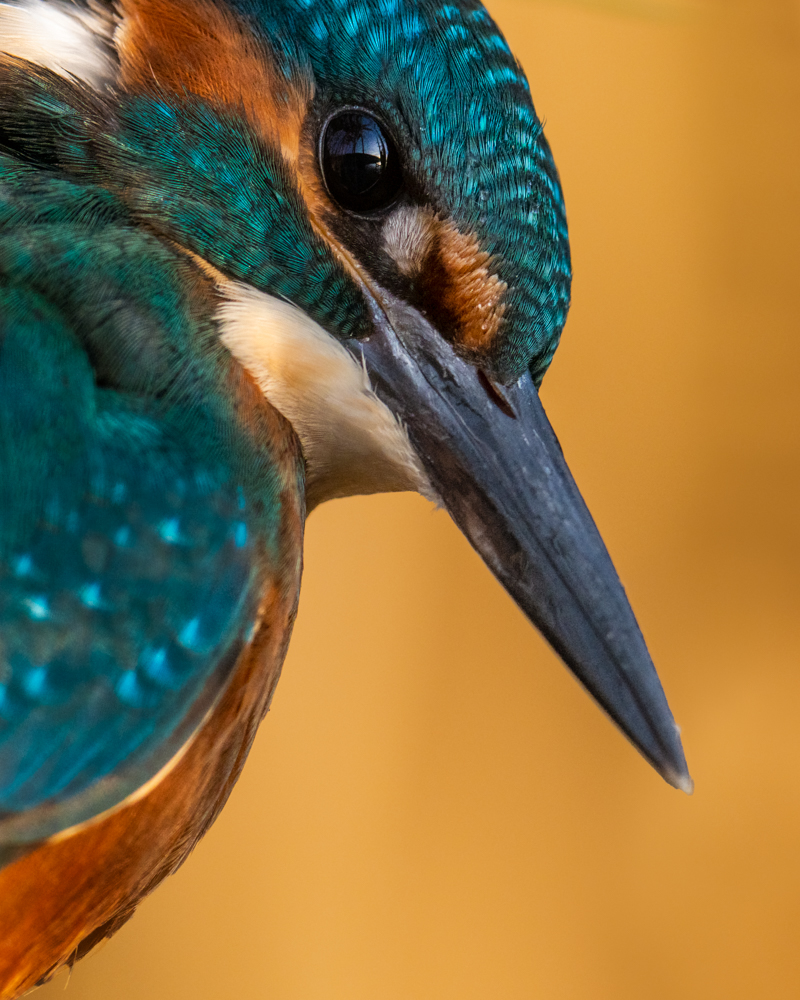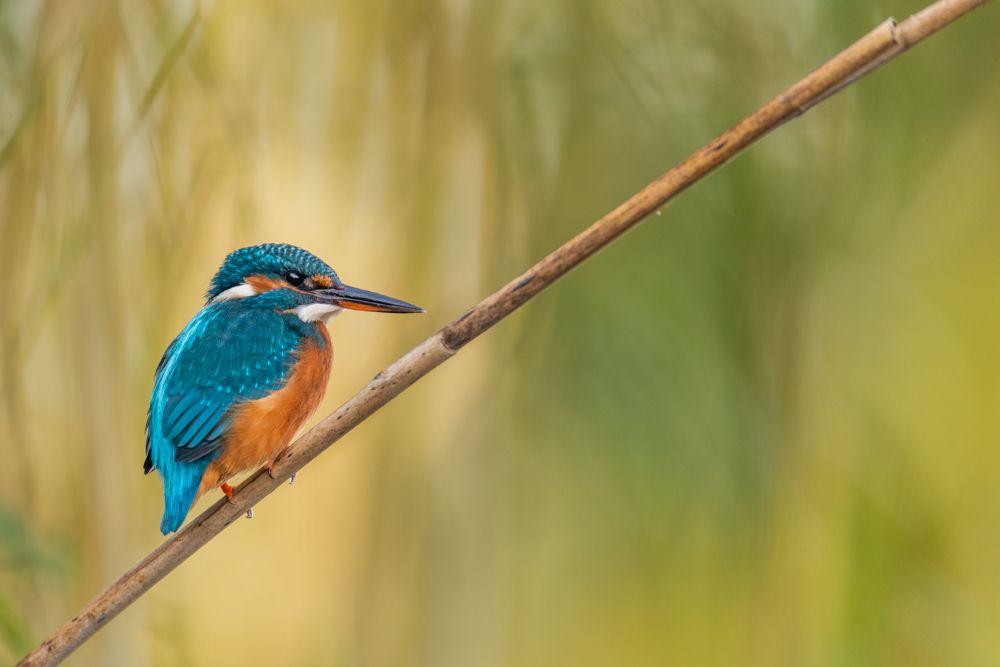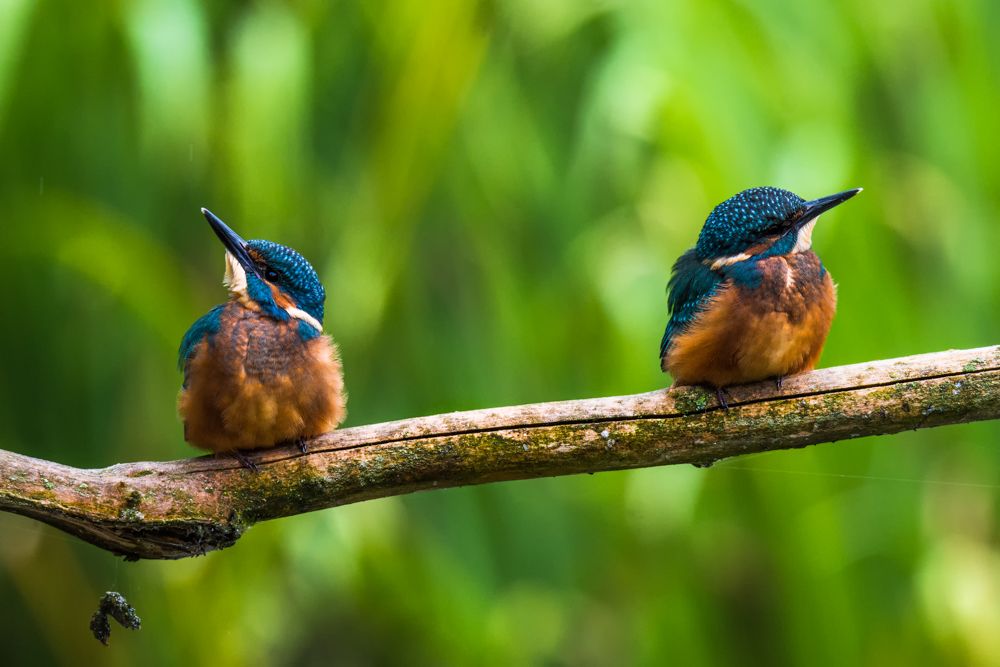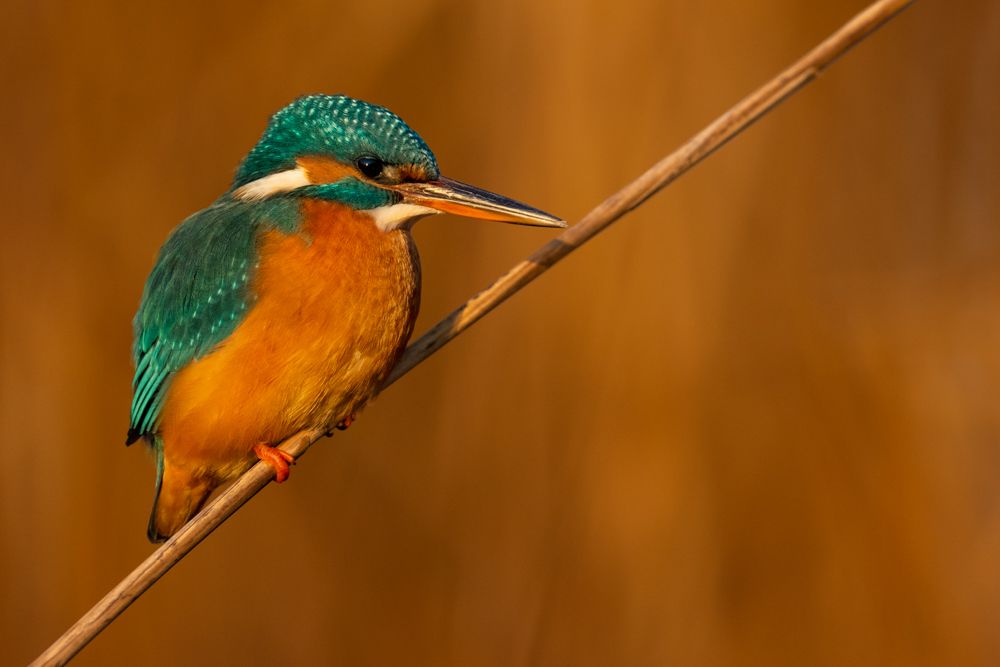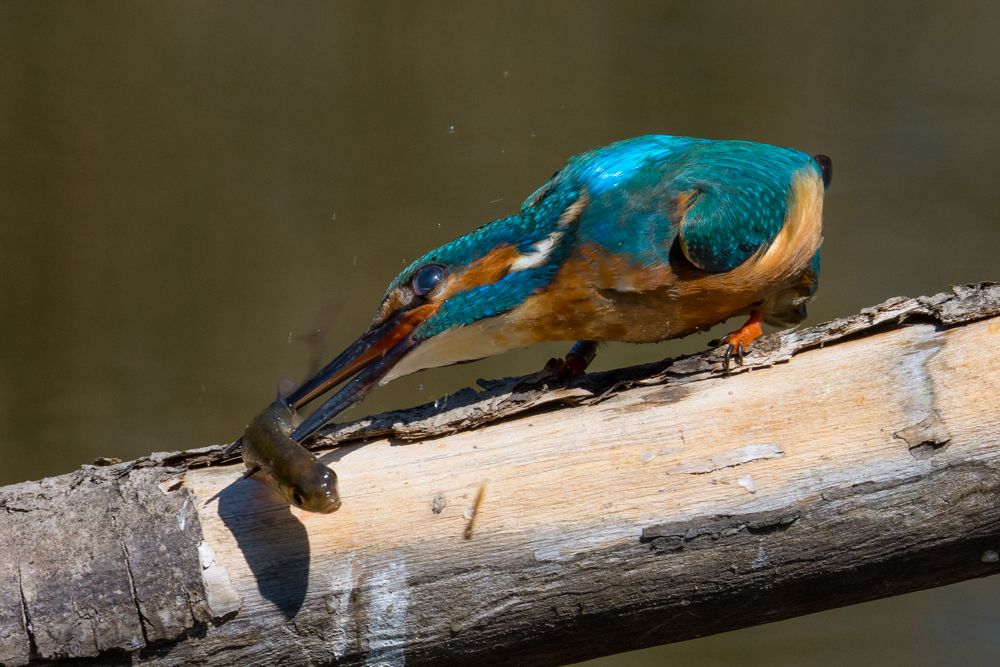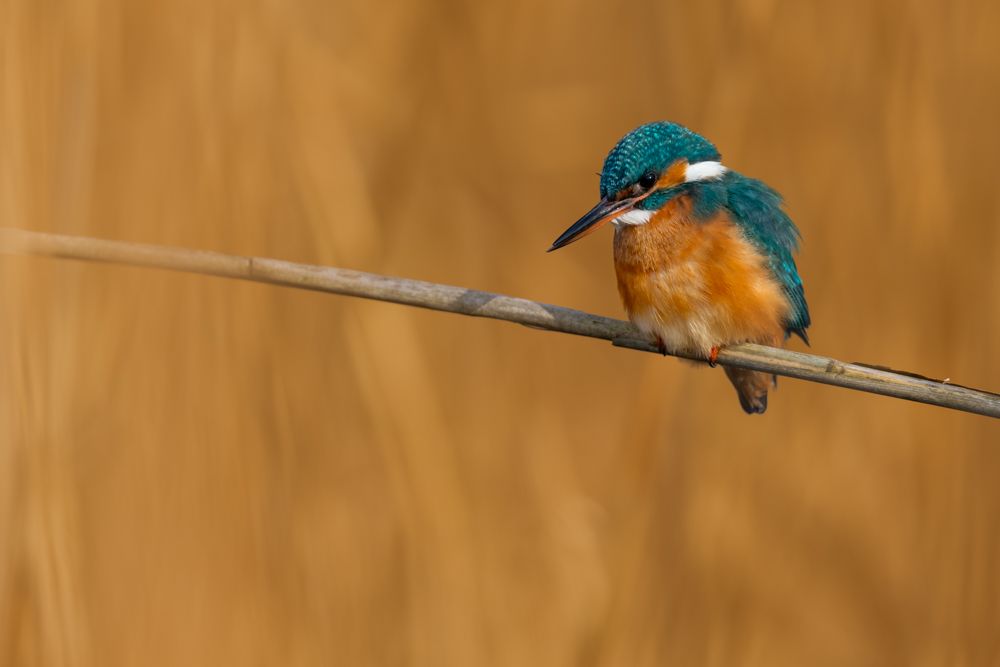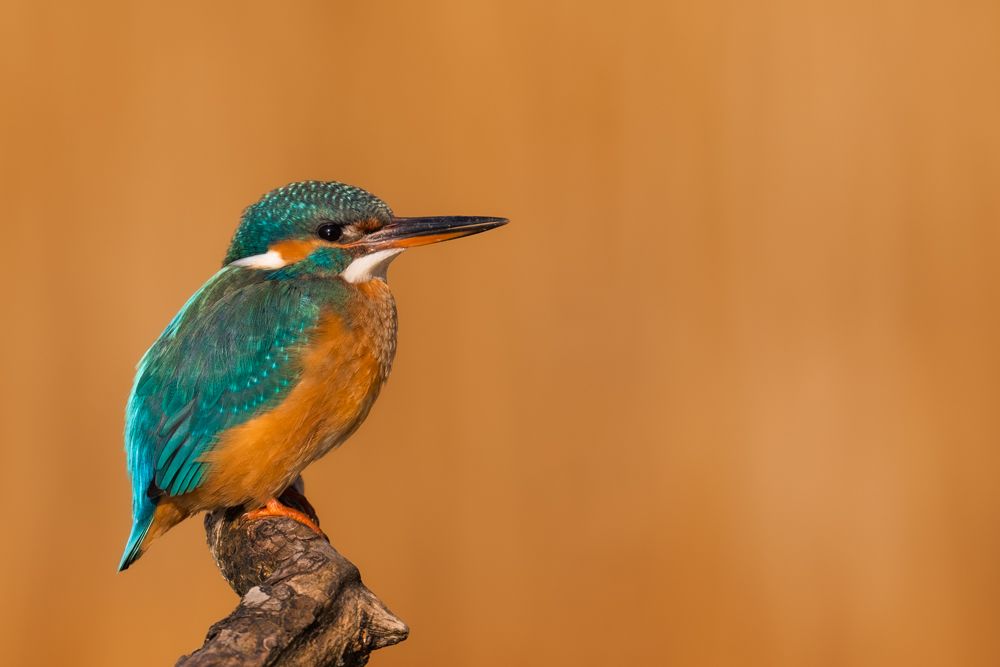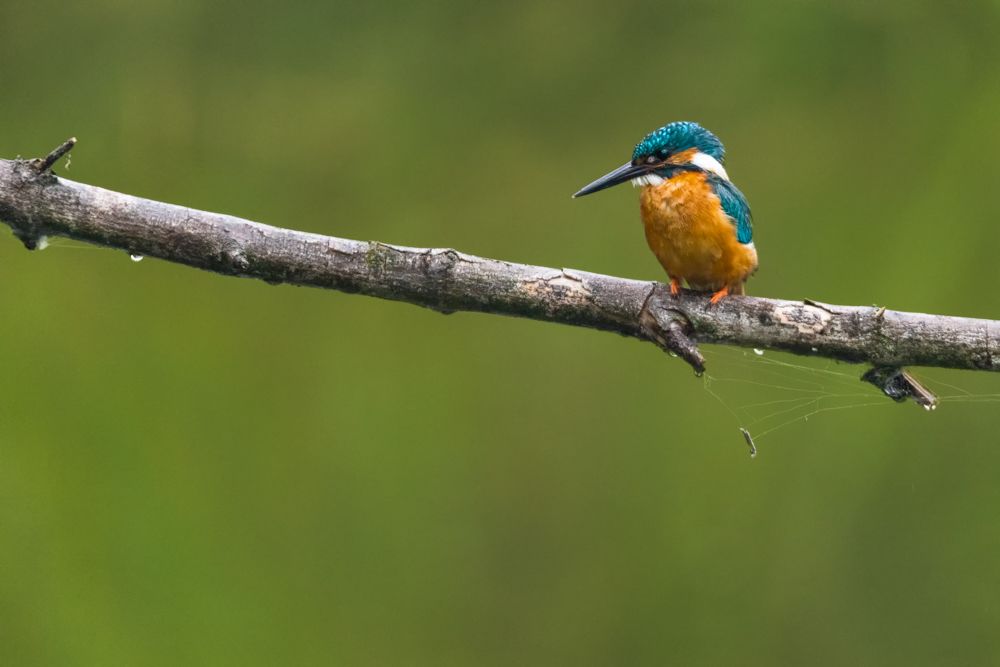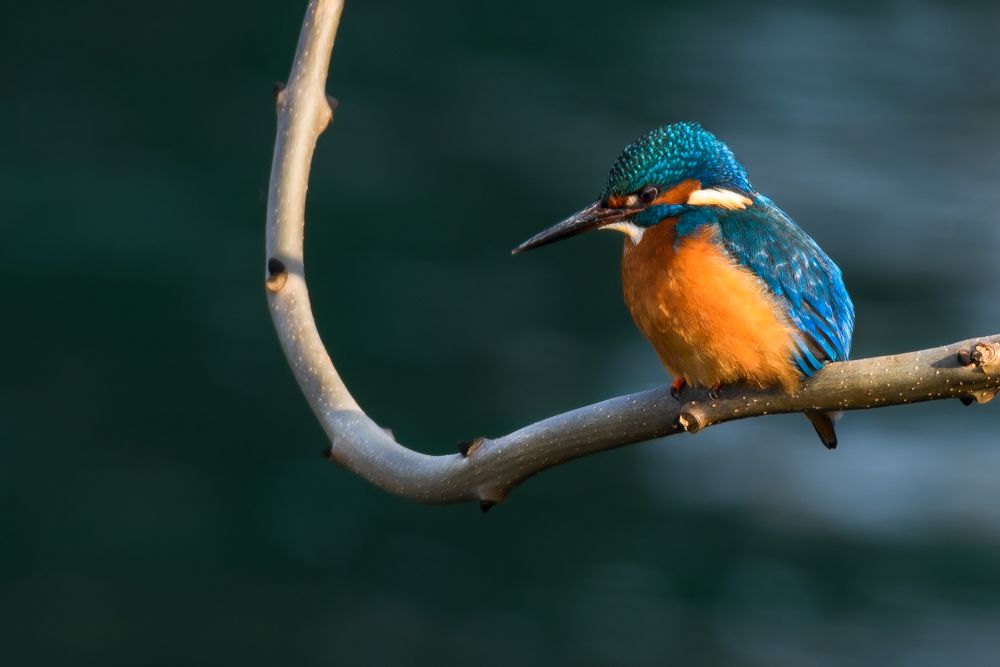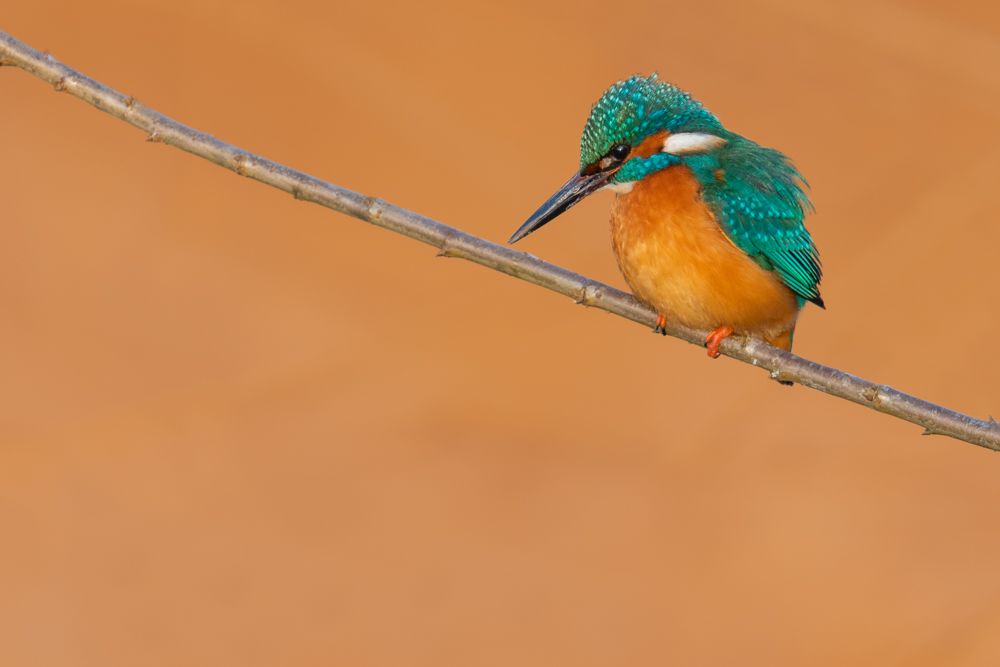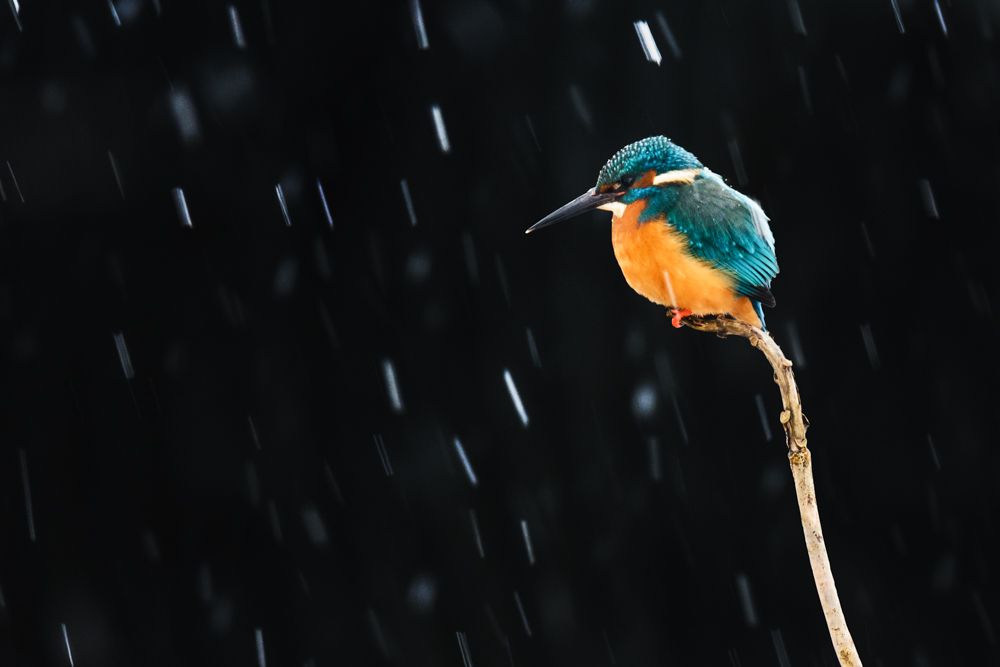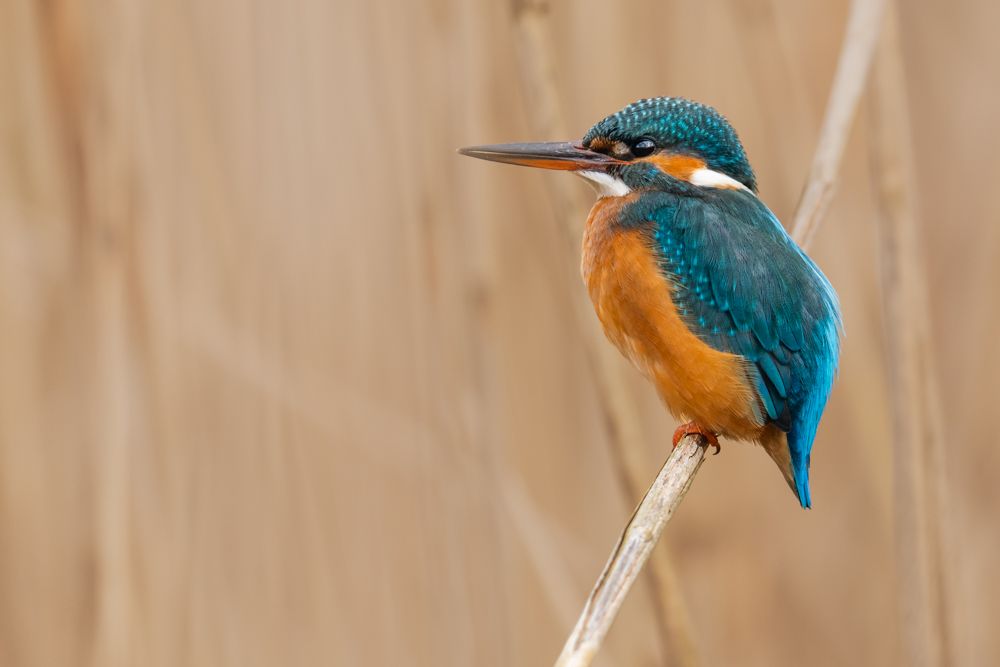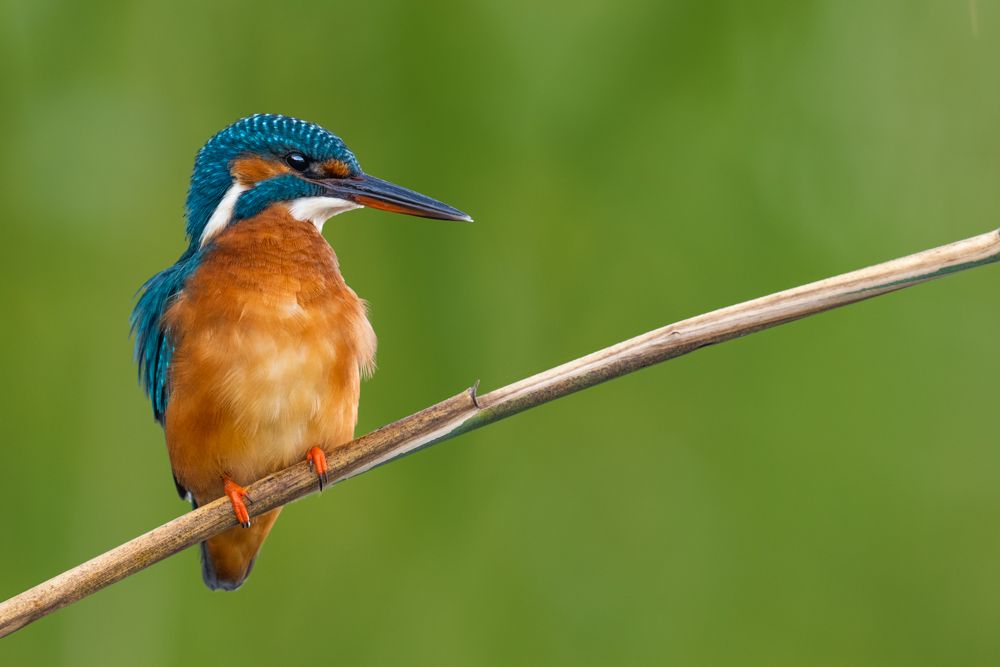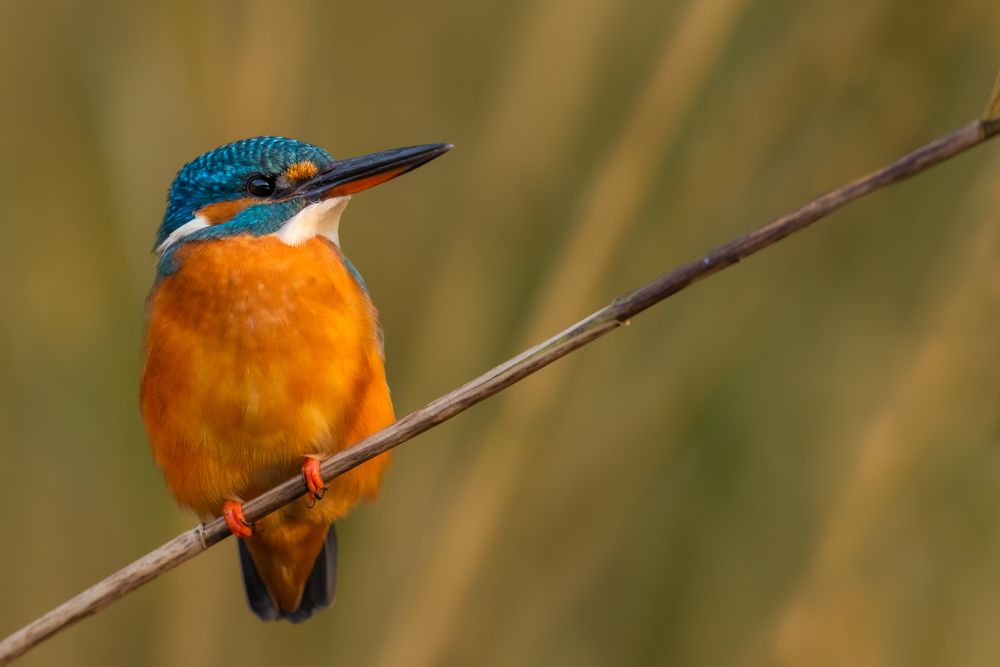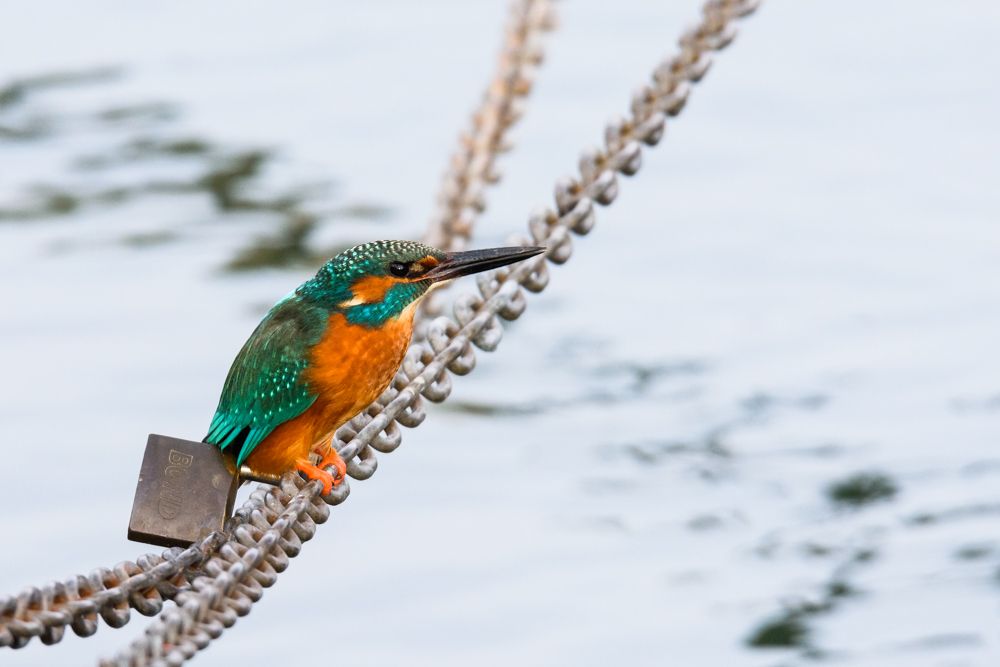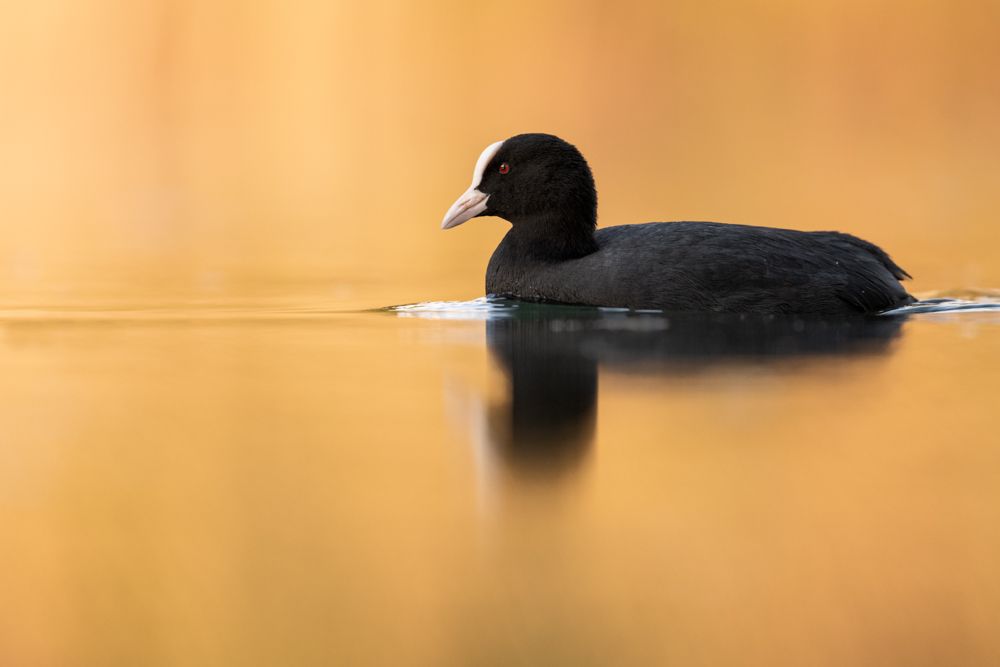Appearance & Identification
Profile
Scientific name: Alcedo atthis
Class: Birds
Order: Coraciiformes
Family: Kingfishers
Length: 16-17cm
Wingspan: 24-26cm
Weight: 40-45g
Distribution: Europe, Asia, North Africa
Breeding population EU: 80’000 - 160’000 pairs
Habitat: Slowly flowing waters
Migration behaviour: resident bird, short-distance migrant
Common kingfisher (Alcedo atthis)
The kingfisher is unmistakable due to its striking colouring. The chest of the kingfisher is orange. Shoulder feathers and wings are blue to turquoise but can also appear light blue depending on the light. The back feathers have a slightly lighter blue than the shoulders. Below the beak the kingfisher has a white throat. Males and females cannot be distinguished by their plumage. The only external distinguishing feature is the underside of the beak. The female has an orange underside of the beak. This orange colouring increases with the age of the female. Younger females are more difficult to recognize because they often show only a small spot of orange.
Younger kingfishers are a little less intensely coloured and have a bright beak tip. They also have dark grey feet. Kingfishers acquire the orange colouration of their feet over the course of their second year of life.
Risk of confusion
The kingfisher can hardly be confused. I have already noticed that certain people confused the kingfisher with the nuthatch. However, these two species can easily be distinguished by their different habitat and behaviour. In addition, the nuthatch is much less intensely coloured.
Where do common kingfishers live?
The kingfisher inhabits the banks of slow-flowing waters and smaller standing waters that offer a potential breeding site. The kingfisher digs its nest in the vertical bank slope. Occasionally it digs its nest into the root plate of a fallen tree. In addition, there must be enough perches in and around the water. The colourful bird needs these to hunt small fish.
In winter, the kingfisher is less demanding on its habitat. In winter it can be found at all kinds of waters. Some individuals even overwinter in harbour areas. They use the railing of boats or jetties as perches.
Distribution in Europe
The common kingfisher is a widely distributed in the entirety of Europe except Scandinavia and north Scotland. The breeding population is estimated at about 80’000 to 160’000 pairs. However, this number can fluctuate greatly from year to year. In cold winters the populations can dramatically collapse. The shores freeze at just a few degrees Celsius below zero and the kingfisher can no longer get to its food.
What does the common kingfisher eat?
The diet of the common kingfisher consists mainly of small fish. But he also eats insect larvae and, on some occasions, even frogs. On a perch, i.e. a branch or a reed above the water, the small bird waits until it discovers a small fish in the water. The kingfisher then plunges vertically into the water with its wings retracted. There it tries to grab the fish with its beak before it takes off again. To kill the fish, the bird strikes it several times against a branch.
To prevent the fish from getting stuck in its throat, the kingfisher devours it headfirst in one piece. If you observe a kingfisher with the fish's head sticking out of its beak at the front, this is a good indication that the kingfisher is probably feeding the young.
Breeding behaviour
Kingfishers dig a long breeding tube in the steep bank. Because many of these steep embankments have been lost due to the straightening of the riverbanks, artificial nesting aids were necessary to ensure the kingfisher-population. At the end of the breeding tube is a small cave in which the female lays 6 to 7 eggs. These are incubated alternately by the male and female. After 18 to 21 days, the young hatch. They are supplied with small fish by their parents for the next 23 to 27 days. After that, the parents gradually stop feeding until the young kingfishers leave the breeding cave. In the first 2 to 3 days the young are still fed by the parents. Then they are driven out of the territory and they have to find food themselves.
In the meantime, the parents already start another brood. The broods can even overlap in certain cases. A pair of kingfishers can raise up to 3 broods per year. Up to 5 young per brood fly out. Only a few of them survive the first winter though. Kingfishers in general have a relatively short life expectancy, as they are highly dependent on the weather and only a short cold snap can decimate the population drastically. To counteract this, the reproduction rate is relatively high.
But, given the kingfisher finds a good territory, the bird can also live for quite some years. In fact, the longest recorded lifespan of a kingfisher in the wild is 21 years.
Is the kingfisher a migratory bird?
This depends a lot on where the kingfisher lives. In the southern part of Europe, the kingfisher is mainly a resident bird. The northern population, however, migrates south as their breeding grounds freeze over during the cold winter months. In very cold winters, even breeding birds migrate from mid Europe can migrate further south. In fact, there are kingfishers that migrate as far as the Mediterranean Sea and hunt in salt water.
Photographing the kingfisher
Kingfishers are rather shy animals. Without camouflage, there is no chance of getting to the beautiful birds at a close distance. In winter, you have a good chance of seeing a kingfisher at all types of waters. With a camouflage tent and some branches set up along the water, the chances of being able to photograph the kingfisher are quite high.
Other species
Resources
The population figures, length, weight and wingspan correspond to the data of the Vogelwarte Sempach
Information on behaviour, distribution etc. is based on my own observations and was supplemented with information from the following sources:
The Birds of Switzerland (2007) Lionel Maumary et al.
Swiss Breeding Bird Atlas 2013-2016
The Cosmos Bird Guide (2017) Lars Svensson et al.


